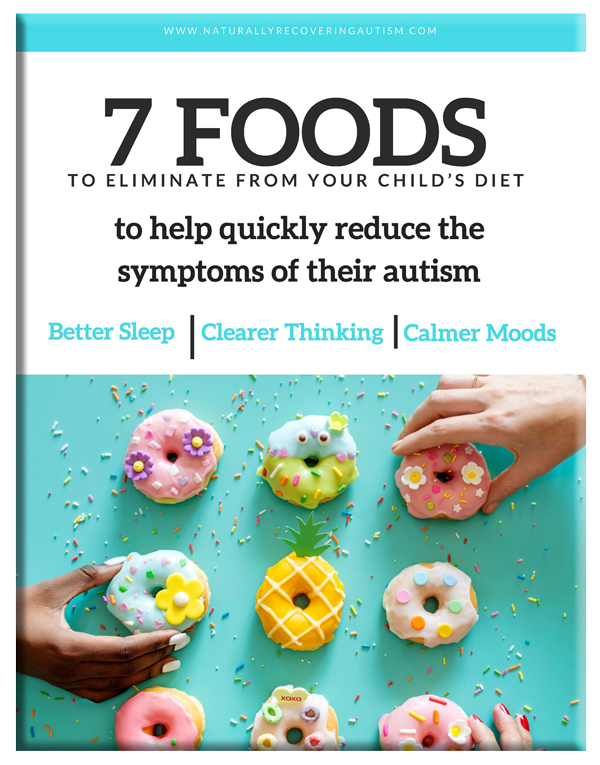Vitamin D is one of the most important vitamins and one that most people are deficient in. Be sure you supplement with vitamin D3, as it is the most bioabsorbable form. Many neurodevelopment conditions are associated with vitamin D deficiency such as depression, lack of motivation, dementia, Parkinson’s disease, epilepsy, muscular sclerosis, and schizophrenia.
Vitamin D helps neurons grow and survive, and is important in brain development and its protection. It also decreases heavy metal damage to the brain, and is anti-inflammatory.
As we approach the winter months we have less exposure to vitamin D from the sun. I’ve always said it’s not flu season, it’s low vitamin D season. This is why the prevalence of colds, flus and other viruses is so strong in the months with less sunlight and less skin exposure due to long sleeves and long pants covering our skin.
Vitamin D is essential for fighting both viral and bacterial infections. It seems to be especially important in fighting viruses and is a far better choice in fighting the flu than anything, especially other toxin filled options that only cover one strain of influenza.
A 2009 pediatric research journal stated that children and infants deficient in vitamin D are more susceptible to viral infections.
Several large observational studies have shown a link between a deficiency and respiratory tract infections such as colds, bronchitis, and pneumonia.
—Any mechanism that prevents UVB absorption (clothing, increased pollution, longer periods spent indoors, etc.) works in a similar fashion to prevent cutaneous production of vitamin D3. Using the definitions from above, estimates suggest that 1 billion people around the world may be vitamin D insufficient/deficient.
In characterizing the global health status of children, recognition of vitamin D insufficiency has increased significantly, particularly over the past 20 years.Below “normal” vitamin D concentrations in adults have been strongly associated with tuberculosis, influenza, autoimmune diseases, cancer (prostate, colon and breast) and myocardial infarction. Expanded studies in infants and children are also exploring the effects of vitamin D insufficiency and type 1 diabetes mellitus (25) as well as investigating the risk of developing of allergies and atopic diseases.-

Many problems for infants arise in utero. If a woman is deficient in vitamin D during her pregnancy, then the deficiency will be passed on to the baby. This can be especially common for babies born in the winter months, since we get much of our vitamin D from the sun.
The kidneys must be working properly because they convert vitamin D to its active form. Vitamin D deficiency is also connected to inflammatory bowel disease and liver and gallbladder inefficiency.
There are many correlations between respiratory infections and low levels of vitamin D. Another 2009 study showed newborns with acute respiratory infection were born to mothers who were deficient in vitamin D, especially in the winter months.
Vitamin D deficiency is also linked to asthma in children. If the mother is deficient in Vitamin D during pregnancy, it can affect the brain tissue of the fetus in early development.
Additionally, lack of this vitamin also has a connection to inflammatory bowel disease and asthma. Vitamin D deficiency may increase toxicity from fluoride. Those having seizures that are put on anticoagulant drugs may be deficient due to the drug lowering vitamin D levels.
Supplementation will assist the body’s defenses against these issues. Sufficient amounts of magnesium are necessary in order to absorb vitamin D, since the body actually makes vitamin D when the skin is exposed to sunlight. Overuse of sunscreen adds to the problem. In July of 2023, research found that more than 50 percent of children are vitamin D deficient.
Fifty percent of children ages 1 to 5 and 70% of children ages 6 to 11 have a vitamin D deficiency.
We need to get our children outside more. Instead of television or a video game, go for a walk, sit in the backyard and play a game, go to the park, or go for a bike ride.
To increase your exposure to the sun, wear shorts and short sleeves if possible. A bathing suit is even better. Leave the sunscreen off for 10 to 20 minutes on hot days and much longer on cooler days. Use your own discretion on safety depending on the weather you are in.
The fear of skin cancer has resulted in vitamin D deficiency. Too much sunscreen and covering up completely eliminates our exposure. We don’t want to burn, yet we need sun. Most commercial sunscreens contain cancer-forming chemical. The skin is the largest organ of the body. It will absorb whatever we put on it.
Be sure to buy non-toxic sunscreens. Local health food stores carry many brands, such as Jason, that make a natural, mineral-based, 45 SPF sunscreen specifically formulated for kids and their sensitive skin.
To test for vitamin D on your own from your home go to www.directlabs.com or call (800) 908-0000. This vitamin D hydroxy test is only $59, instead of the usual $232 you would pay at a doctor’s office, and comes without an expensive doctor appointment and wasted time. A phone consultation with a physician is available. (Note: The site now offers the vitamin D test as part of an overall fat-soluble vitamin test.)
When supplementing with vitamin D, be sure to get vitamin D3, as it is the most absorbable form. Remember to take it with food, especially with good fats, for better absorption.
Liquids have far better absorption, especially for those with compromised digestive systems, and therefore, compromised absorption. Vitamin D3 is sold in any health food store in many forms such as liquid, or capsule. Get one with an oil base as vitamin D is a fat-soluble vitamin and needs oil to absorb. Often vitamin E is taken with it. Remember to keep all oils in the refrigerator so they do not become rancid.
Be sure you are giving your child the appropriate dosage for his age. Many supplements, especially for children, have very low doses. He may need to take several to get his needed daily requirement. This number has risen from 400 IU per day to as much as 2,000 IU for a child and up to between 5,000 and 10,000 IU per day for some adults. Vitamin D levels are easily tested in blood work.
VITAMIN D DOSAGE FORMULA
The amount of vitamin D3 we need each day in supplemental form depends on our level of current deficiency, how much of our body is exposed to sunlight every day, and how much time your skin is exposed. There is a formula for the breakdown regarding the varying requirements of vitamin D. This formula can be used for any person of any weight including pregnant women.
The formula is:
(basic daily vitamin D3 dosage) = (body mass in pounds) x 27
Twenty-seven IU is the amount of daily vitamin D3 needed to keep blood levels at their optimum of 50ng/ml without getting any sunlight. For example, the basic daily vitamin D3 dosage for a 50-pound child would be 50 x 27 = 1,350 IU per day.
You must also take into consideration the amount of vitamin D gained by sun exposure. If your child wears long pants, a short- sleeved t-shirt, and a hat, he receives about 10% sunlight on his skin.
To adjust for sun exposure, use this formula:
(your daily need) x (% of your skin exposure) x 2
If the child in the example above needs 1,350 IU of vitamin D3 per day, you would multiply 1,350 x 10% x 2 = 270 IU of vitamin D gained from sun exposure. Now subtract that amount from your daily requirement: 1,350 – 270 = 1,080 IU vitamin D3 in supplemental form is needed per day. In the winter, we will obviously need more supplemental vitamin D than in the summer months when we are exposed to more sunlight.
If your child wears only shorts or swim trunks (lower legs, torso and arms fully exposed), he receives over 50% exposure. If we get over 50% sun exposure for as little as an average of 15 minutes per day, we have our daily quota of vitamin D.
Again, always be sure to take vitamin D3, and take it with food for best absorption. For example, take it preferably with a food that contains some good fats in it such as olive oil, coconut oil, nuts, or poultry with skin on. Do not take the bad fats as they offer other health related issues.
(2)The Vitamin D Connection to Pediatric Infections and Immune Function
Quickly Reduce Your Child’s Symptoms
of Autism by Eliminating 7 Specific Foods that Most People Consume Daily!
The first crucial step of autism recovery is to begin restoring health to the gut and the immune system.
The health of the gut is directly linked to the health of the brain and therefore to the symptoms of autism. In fact, 80% of the immune system comes from the gut so if the gut is not healthy, then the brain can’t thrive, and the immune system is compromised. It’s a vicious cycle, but thankfully, it’s one that we can put an end to by first eliminating harmful foods.
This is for informational purposes only and is not meant to diagnose or treat. Every child’s level of recovery is different. No two people are the same. It is never implied that all children will have the same outcome. Results are all based on individual biology and the work that is done. This process takes time and various steps, effort and resources need to be weighed. Our programs are intended to help you become more knowledgeable and guide you to help bring your child a better quality of life, whatever that may be. We want to help by giving great content, direction and strategies that move you forward. Nothing on this page or any of our websites is a promise or guarantee of results or future outcomes. The results on this page and any of our websites are not typical or promised. In fact, there will be people who purchase this and other programs and never put the work into implementing the strategies taught and therefore will achieve little to no results. Our more detailed earnings disclaimer, privacy policy, and terms and conditions for this program and website can be accessed via the links below. We hold ourselves (and you) to a high standard of integrity. We are cheering you on every step of the way.











